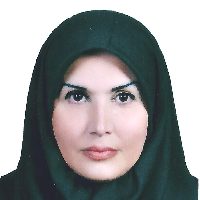Equilibrium in Plural Shape of Unique Light in Case of Sash Windows of Nasir al-Mulk Mosque
Colored windows are part of the architecture of traditional Iranian buildings in the Islamic period, which act as gates for the passage of single light into space and its division into different colors. The main purpose of research is to create sensitivity in design of colored glass, to express the principle of using color in colored windows of traditional and Islamic buildings, to discover the relationship between color separation and architectural space quality in sustainable lighting system. the other goal is to achieve one of the effective characteristics in creating balance in a permanent building (Nasir Al-Molk Mosque).
The type of research is qualitative-quantitative. The extraction of materials has been done by collecting information from documentary sources and field perception of the pattern and area of Nasir Al-Molk Mosque colored glass.Finally, through the comparative analogy of the proportion of colored glass surfaces with the theoretical basis of the results have been extracted.
In the sample, five types of general coloring and 15 types of partial coloring were analyzed. Blue, turquoise, green (cold colors) and red and yellow (warm colors) are used in colored windows with balance and one in between.
Extraction of the ratio of cold to warm colors close to one in accordance with the principles of Islamic philosophy showed that, the pattern of color distribution in space was not random, and in this regard, there is unity.
-
Futures Studies of the Environmental Component in Educating Cities: An Approach Based on Global Experiences
Sara Feli *, , Hossein Zabihi
Journal of Geography and Regional Future Studies, -
Analytical Comparison; On the Challenges and Opportunities of Architectural Components Influencing Urban Branding in Yazd and Rasht
Rana Abbasi, Azadeh Shahcheraghi *,
Journal of Urban Economics and Planning,


